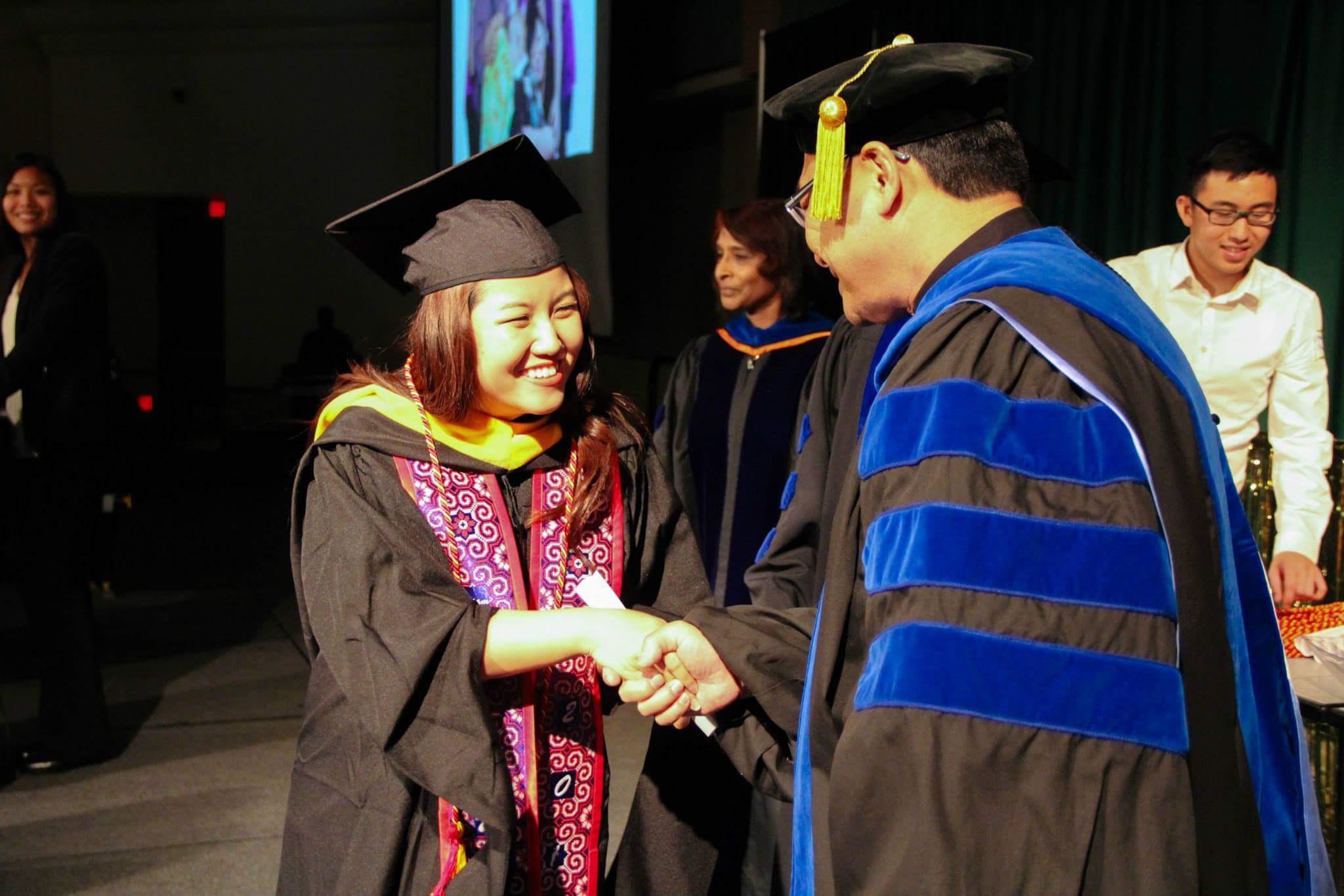 Significant cultural factors have affected Hmong students in their pursuit of college success. (Sacramento State file)
Significant cultural factors have affected Hmong students in their pursuit of college success. (Sacramento State file)A new report from Sacramento State aims to fill a gap in research into Hmong American college students and provide a roadmap for how the University, which has the second-largest Hmong student population in the California State University system, can provide more support and encourage their persistence to graduation.
“Ecological factors in Hmong American educational success,” authored by Sacramento State alumnus and current staff member Chao Vang, is the first of its kind to explore the needs and academic development of Hmong college students. Vang began the research in 2015 for his doctoral dissertation and conducted the study through a survey of Sacramento State Hmong students and in-person interviews with Hmong students and parents. The research was funded by the California Endowment.
Hmong students face challenges similar to other underrepresented minority student groups, Vang says, but these challenges have not been as well documented, in large part because the Hmong have only been in the United States in significant numbers for 40 years.
“Their experience is not a new phenomenon,” he said. “They still face some of the first-generation, low-income challenges that other students face, but finding data about Hmong students specifically is still difficult.”
Although Hmong students overall say they feel connected to the campus, cultural and familial obligations can make it difficult for them to become involved in extracurricular activities, utilize campus resources such as the career center, or commit to group work on the weekends, according to Vang. And with Sac State having only a handful of Hmong faculty and staff, he ssaid, it can be difficult for Hmong students to find someone on campus who understands their experience.
“We have pressure to be successful for our family, but at the same time, we have a lot of family obligations that, if they’re not met, it will be dishonorable,” said Andrew Yang, a Hmong student who is a member of the Hmong University Student Association and the Hmong Health Alliance student groups. “Having pressure on campus to succeed in your courses and graduate, and having pressures at home, it’s very difficult to balance the two.”
The report makes several recommendations for Sacramento State to improve its support for Hmong students, including hiring Hmong faculty and staff, establishing organizations or programs that promote the success of Hmong students, and partnering with Hmong parent and community groups.
The Hmong began emigrating from Southeast Asia to the United States as refugees in the 1970s, settling primarily in California, Wisconsin and Minnesota. Over the last decade, Sacramento State has seen a nearly six-fold increase in the number of Hmong students on campus, from 153 enrolled in Fall 2005 to 1,075 In Fall 2016. That number is expected to increase due to the relatively young median age of the Sacramento Hmong population.
Challenges outlined in the report, however, often lead those students to fall behind their peers. The four-year graduation rate for the Fall 2012 Hmong student cohort was just 1.3 percent, well below the University’s overall rate.
The report, says Sacramento State President Robert S. Nelsen, will help the University improve that number.
“In these times when America is struggling with immigration and immigration policies, there is much to learn from the Hmong diaspora and from their journey and experiences,” Nelsen said in a message included with the publication. “With this groundbreaking report, Sacramento State shows its commitment to be an inclusive campus that plays a central role for the economic success of Hmong Americans in our city and in our region.”
The report highlights the importance of disaggregating the University’s demographic data – separating Hmong students from the broader Asian-Pacific Islander designation, for example – so that challenges and opportunities facing all racial and ethnic groups can be explored.
“When we’re lumped as an Asian group, we’re doing extremely well, not to say that Asians in general do not need any support,” he said. “But if we’re able to disaggregate data, we’re able to see what areas we need to target, whether it’s outreach, retention or degree-completion support.”
Sacramento State’s Student Academic Success and Educational Equity Programs (SASEEP) and the Full Circle Project, along with numerous community groups, will host the Hmong Male Leadership Circle Summit in the fall. The event will bring together 250 students and alumni to address the retention and graduation rates of Hmong-American male students at Sacramento State.
The full report is available online. - Jonathan Morales
